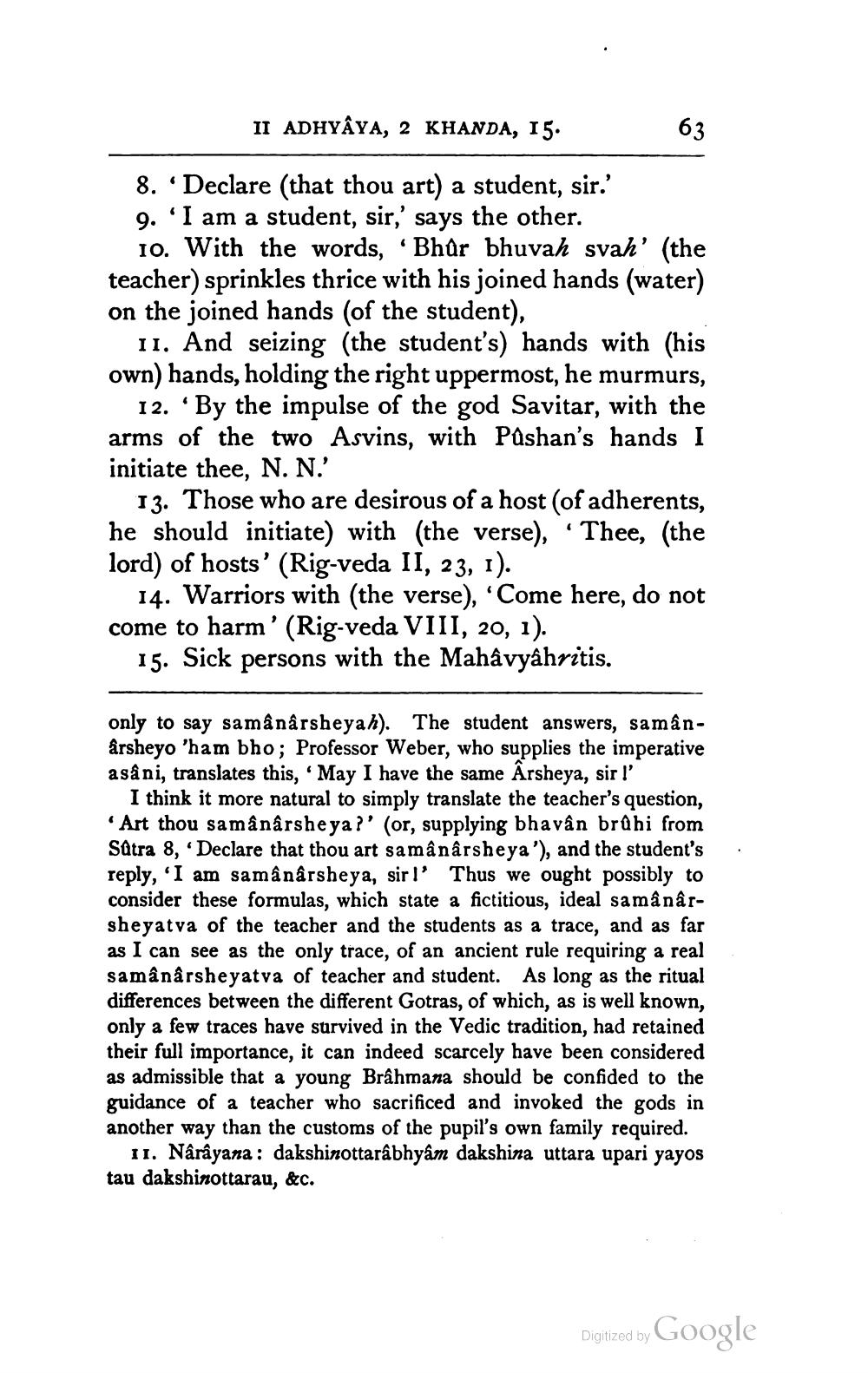________________
II ADHYAYA, 2 KHANDA, 15.
8. ' Declare (that thou art) a student, sir.' 9. 'I am a student, sir,' says the other.
10. With the words, Bhûr bhuvah svah' (the teacher) sprinkles thrice with his joined hands (water) on the joined hands (of the student),
11. And seizing (the student's) hands with (his own) hands, holding the right uppermost, he murmurs,
12. ‘By the impulse of the god Savitar, with the arms of the two Asvins, with Pashan's hands I initiate thee, N. N.'
13. Those who are desirous of a host (of adherents, he should initiate) with (the verse), “Thee, (the lord) of hosts' (Rig-veda II, 23, 1).
14. Warriors with the verse), 'Come here, do not come to harm' (Rig-veda VIII, 20, 1).
15. Sick persons with the Mahâvyâhritis.
only to say samânârsheyah). The student answers, samânårsheyo 'ham bho; Professor Weber, who supplies the imperative asâni, translates this, 'May I have the same Arsheya, sir l'
I think it more natural to simply translate the teacher's question, Art thou sa mânârshe ya?' (or, supplying bhavân brûhi from Sätra 8, Declare that thou art samânârsheya'), and the student's reply, 'I am samânârsheya, sir!' Thus we ought possibly to consider these formulas, which state a fictitious, ideal samânârsheyatva of the teacher and the students as a trace, and as far as I can see as the only trace, of an ancient rule requiring a real samânârsheyatva of teacher and student. As long as the ritual differences between the different Gotras, of which, as is well known, only a few traces have survived in the Vedic tradition, had retained their full importance, it can indeed scarcely have been considered as admissible that a young Brâhmana should be confided to the guidance of a teacher who sacrificed and invoked the gods in another way than the customs of the pupil's own family required.
II. Narayana : dakshinottarabhyam dakshina uttara upari yayos tau dakshinottarau, &c.
Digitized by Google




